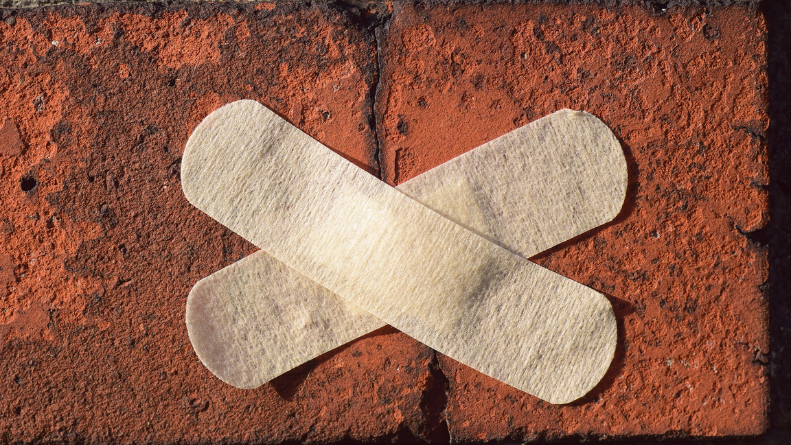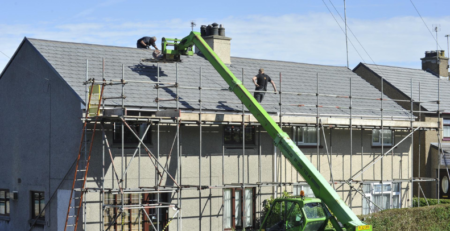A Guide to Building Insurance and Subsidence
In a previous article, we covered what subsidence is, how to spot it, how to remedy it, and how to prevent it. We cover building insurance in this dedicated article as it warrants an in-depth look. Before we continue into the details, let’s take a brief look at what it is so we can be clear exactly what we are talking about.
What is building insurance?
Simply put, insurance for a home is known as “buildings insurance.” The following are typical types of loss or damage that can be covered by a building insurance policy:
- Flooding and fires
- Pipes that have burst
- Vandalism and theft
- Trees, power lines, lampposts, and satellite dishes that have fallen and damaged your property as a result
- Damaged caused by vehicles and aircraft
- Explosions
- Earthquakes and bad weather like storms
- Subsidence
As you can see, this is a broad list, and your insurance coverage may not include all of the items on it. Make sure your cover is what you think it is and covers everything that you need.
The costs associated with tearing down the damaged structure, clearing up the site, and paying the architects’ fees you will need before construction can begin should all be covered by the insurance you choose. If it doesn’t, seriously consider changing or upgrading your policy to cover the important things.
Is building insurance necessary?
For those that are paying off a mortgage, you should get insurance for at least the remaining amount you owe. Even if you’re one of the fortunate ones who doesn’t have a mortgage, it’s still wise to get building insurance. Why? How do you feel about shouldering the financial burden of a house having to be rebuilt? The chances are this would come as a nasty shock for you and seriously affect your retirement plans.

Tenants often do not need to obtain building insurance, as this is typically handled by the landlord, but leaseholders may find that their lease requires them to obtain insurance from a certain insurer and with a certain level of cover. But tenants should seriously think about getting contents insurance that covers the fixtures and appliances in the building.
This is only the starting point for consideration as each situation is unique. The leaseholder and any tenant living in the property should check and verify the level of coverage by reviewing the relevant paperwork. If you are not sure, ask your insurance provider to explain what exactly you are covered for and what further additional things could be covered.
Do all building insurance policies cover subsidence?
Subsidence coverage is not mandatory in any given policy. Some companies will, while others will only provide it as a supplementary service. You will have to check with the insurance provider if you are specifically covered for subsidence and, if not, have it added to your policy.
However, even if subsidence is covered under your building insurance, you should read the fine print to make sure you know what precisely it covers.
What can I claim on my subsidence insurance?
Most property insurance policies will pay to fix damage or replace loss due to subsidence but will not pay for prevention. This is crucial to keep in mind, since many people mistakenly believe that the cover can be used as a preventative measure.
To drive home the point so it’s very clear, property insurance often only covers the cost of making repairs after subsidence has already occurred and does not include coverage for avoiding additional damage. As an example, subsidence can cause cracks in the structure of a building, which are covered, but the cost of stopping the building from moving further is not.
Possible policy limitations related to subsidence
No two insurance providers are the same, and the same goes with the policies they offer customers. However, certain subsidence claims are often not covered by insurance, such as the following:
- If the main building is undamaged, damage to external items.
- New build homes that experience settlement issues
- Temperature-related movement
- River and coastal erosion
- Alterations to your home’s construction, including demolition
- Oil or water leaking out of permanently installed heating or water systems
Subsidence isn’t included in most homeowners’ insurance policies, but new house buyers shouldn’t worry because their building warranty should cover any damage caused by subsidence.
As the policy holder, it is your responsibility to learn about the exclusions in your policy and how they may affect you and your property. Again, if you are not sure, then seek clarification from your provider.
Purchasing subsidence protection for a building that is structurally good
Subsidence is often covered by building insurance, as indicated above, unless the building in question has a history of subsidence.
What about excess?
Yes, there will likely be an excess to pay. As you can imagine, each provider will be different, but a rough estimate puts the subsidence extra cost at about £1,000.
Can I still acquire insurance if I file a subsidence claim?
After filing a claim, it might be more difficult to find an appropriate building insurance policy. You may still find cover, but you will probably have to pay extra for your insurance.
If you notify your insurance about subsidence, they may ask you further questions regarding the problem, such as:
- When did subsidence first impact the home?
- What was the cause of the subsidence?
- Explain the steps taken to resolve the issue
- Was the building underpinned? If so, partially, or fully?
- Is there any evidence of continued earth movement at the site once the remedial work is finished?
- To what extent, if any, did you claim for repairs?
- What was the filing date for the claim?
- Finally, what amount was the claim for?
Insurers may ask you more questions than this, of course, but these should give you an indication of the type of information they will need to provide you with an accurate quotation. Also, documents like structural building surveys, homebuyer reports, certificates of structural adequacy, and structural engineer reports will be needed to prove that the work was done correctly and by qualified workers.
Insurance brokers that are members of the British Insurance Brokers’ Association (BIBA) are a good choice if you need help with subsidence.
When shopping around for an insurer, it’s a good idea to inquire as to their policy’s transferability to a new owner and the conditions under which it may be sold. A lot more potential buyers will be interested in purchasing the home if they know they can keep their insurance even after you’ve moved out.
What if you change insurance companies right before a subsidence issue arises?
Previously, this was a question that came with some uncertainty. The problem has been made clearer by the Association of British Insurers (ABI), which says that your old insurer must handle any subsidence claim found within eight weeks of switching carriers.
If subsidence is identified between weeks 8 and 12, liability is shared evenly between the two insurance companies. After the initial year has passed, your new service provider takes full responsibility.
What about damage that occurred before coverage began?
The majority of insurance policies include a time limit during which they will pay out for covered losses. The Insurance Ombudsman Bureau decided that insurance companies are the only ones who have to pay for damage that happens after coverage starts.
However, there is an important qualification to make. The insurance provider is responsible for paying for any additional damage that can’t be fixed without first fixing the original problem. Yet, it could be tough to provide conclusive evidence of this.
Issues with claims for subsidence
Given the complexity of the situation when subsidence occurs, it is to be expected that claims will occasionally encounter difficulties. The following represents some of the issues that may arise with claims:
- Damage claims that are denied because they were brought on by some other uninsured event.
- Claims that were handled wrongly, usually because there wasn’t enough communication and it took a long time,
- The contractors for the insurance companies did a poor job.
- Inadequate accommodations are provided by insurers during remedial work
- Unsatisfactory attempts at claim negotiation by insurers, such as proposing partial rather than full underpinning when the latter is necessary.
Please keep in mind that this is not an all-inclusive list, but rather an example of potential events that may occur to customers during the claims process. Getting in touch with the Financial Ombudsman Service directly is recommended if you need help.
If you think you may have subsidence, what can you do?
We can now consider what you need to do if you suspect subsidence on your property. First of all, there’s no need to freak out because it might not be as bad as you think it is. Even though it might be an annoyance you could do without, subsidence isn’t always a total disaster for your property or budget.
Having said this, it’s highly advisable to begin working on the problem right now and don’t drag your feet on it. Though it may be tempting to forget about the issue for a while and turn a blind eye—after all, we all have a lot going on in our lives—the problem will only likely get worse the longer you leave it.
Contact your insurance agent as soon as possible and share your worries with them. Record all conversations and take pictures of the building at regular intervals to show how it has changed. After you call, the insurance company will send an engineer to your home to have a look and give you more advice.
ARE YOU READY TO START INVESTING?
Subscribe to our mailing list now for exclusive deals, investment guides and the latest information from the property market.






